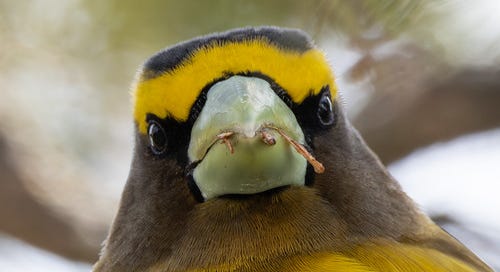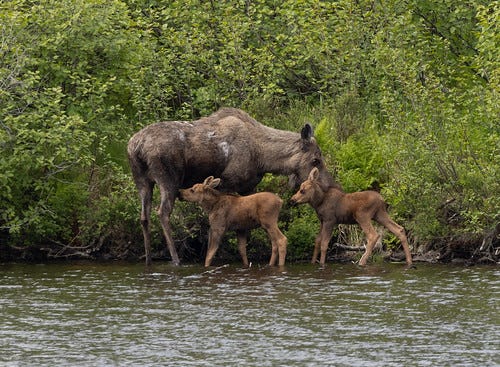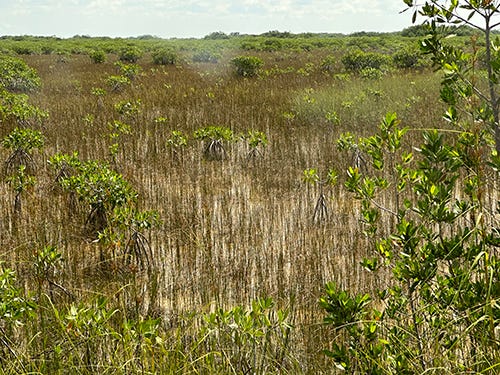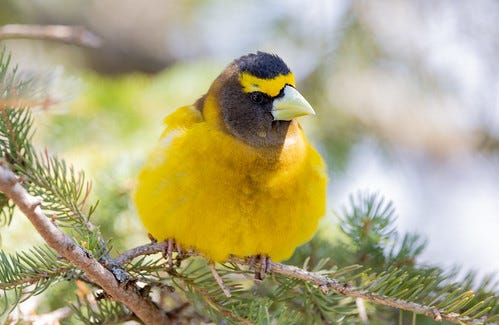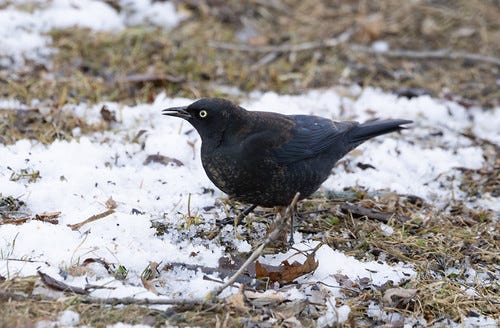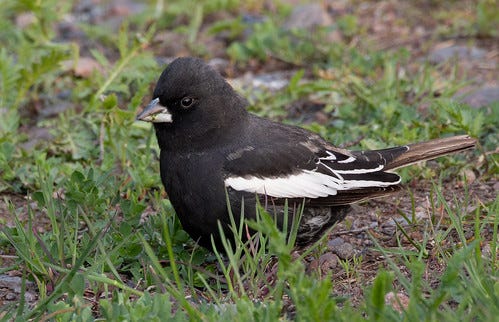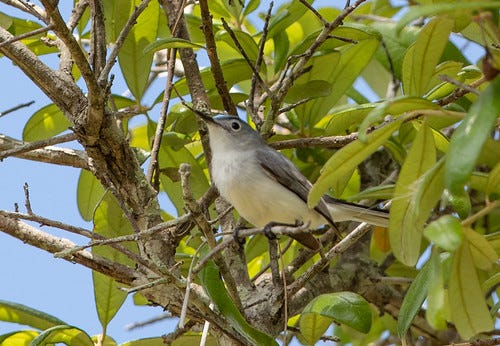(Listen to the radio version here.)
When my kids were little back in the 80s and early 90s, they loved going to Grandma and Grandpa’s house in Port Wing, Wisconsin, on windy days in late spring and summer, because a big pasture out front was exactly the right place to fly a kite. Those same windy days were exactly wrong for me to go birding. It’s extra work for birds to sing or listen to songs against the noise of the wind, so many birds stay quiet when it’s windy, and I never felt like I was missing bird action when the kids were out with their kites.
I did lug Katie and Tommy along for birding one windy day in the late 1980s when a King Eider appeared in Grand Marais. My preschoolers were perfectly content playing in the car on the long drive up, but the moment I opened the car door for us to get out and see the bird, Tommy said, “Too much windy,” and would not leave the car. After all that, the bird was nowhere to be seen anyway. (I saw one up there a few years later, and once in Duluth in December 2013, near the end of my Big Year.)
As with unusually hot days, unseasonably warm winters, wildfires, floods, droughts, hurricanes, tornadoes, and fluctuating sea levels, windy days are nothing new. But half a century ago, college professors were already talking about climate change and how all those weather and climate phenomena would be increasing in frequency and intensity as the atmosphere heated up. Russ and I took that very seriously, always buying the smallest, most fuel-efficient car we could afford (and not replacing it until it was on its last legs); driving at the slowest speed that was safe, courteous, and convenient; making our house as energy efficient as possible; and keeping our thermostat as low in winter as we could handle.
But we were outliers. Even as predictions about climate change grew more and more dire, major corporations and the best politicians money could buy not only minimized the danger—they actively denied that climate change was happening at all, launching huge misinformation campaigns that made global warming seem like a trivial partisan issue for tree-huggers and Al Gore groupies rather than the genuine and accelerating crisis it is.
Meanwhile, we birders can’t help but notice how climate change is already affecting wildlife. Canada Jays are dying out in the more southerly parts of their range as winter thaws spoil the hoarded food reserves they need for feeding their nestlings.
Red-bellied Woodpeckers are steadily moving north as the large stands of hardwood trees they require replace dying northern conifers.
When Russ and I were in Alaska last summer, we thrilled at the large numbers of moose we saw, especially cows with twin calves. That was genuinely exciting and happy until we realized that all this abundance was due to melting permafrost shifting forests northward at the expense of the tundra, leading to losses of another magnificent ungulate who depends on tundra habitat, the caribou. Our sightings of that spectacular mammal were limited to a trip into Denali.
And in the Everglades last month, our only view of a Cape Sable Seaside Sparrow, a critically declining subspecies of the Seaside Sparrow, was a quick, distant glimpse in an area that was once a stronghold for this unique freshwater population. We could see the cause right in front of us, too—rising sea levels had led to saltwater intrusion in what had been freshwater saw grass, and now mangroves were taking over.
In Duluth, this winter was warmer than average despite our record-setting snowfall, but spring has been later and a bit colder than average, with a great many days characterized by extreme wind, sometimes exceeding 40 mph! In the past week or two, the weather map has been showing clear skies here while we’re looking up at murky brown haze from smoke blown to Duluth all the way from massive wildfires in Saskatchewan and Alberta.
The wind has been frustrating for me—on many days when I tried to photograph Evening Grosbeaks here in April and early May, the wind was whipping heavy spruce limbs, making focusing somewhere between hard and impossible. Worse, twice I watched one of the grosbeaks take off from a branch only to get whipped by gusts into other branches. What is “too much windy” for a 30-pound toddler, close to the ground, is way too much windy for a 2-ounce bird trying to fly!
And high winds are loud. I made some splendid bird recordings on a few spring days in recent years when the dawn chorus was in full swing. On windy days I stopped bothering because the noise messed up the recordings. But this year the wind was so extreme so often that my birds weren’t singing much anyway. I think I have the same number of robin pairs close to my yard as I did when I’d be hearing three or four different males from before dawn, but many mornings this year they weren’t bothering to sing.
Even as we birders haven’t been seeing as many migrants as usual since some huge reverse migration events during our snowy April, interesting rarities have been turning up throughout my neck of the woods. I’ve been gone as much as I’ve been around this April and May, but I did get to enjoy an unprecedented surge of Rusty Blackbirds in my own yard during the last snowstorms.
It may have been strong westerly winds that blew a Lark Bunting off course right into my neighborhood this past Sunday. And yesterday a Blue-gray Gnatcatcher appeared with a small warbler flock in the back of my daughter’s yard along Tischer Creek. All these miraculous little creatures are doing their best to survive in the face of “too much windy” and all the rest of the havoc our species is wreaking on this planet we all share.


